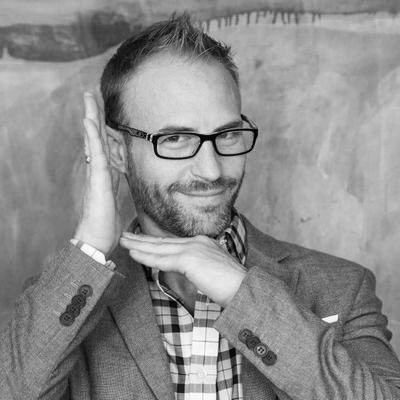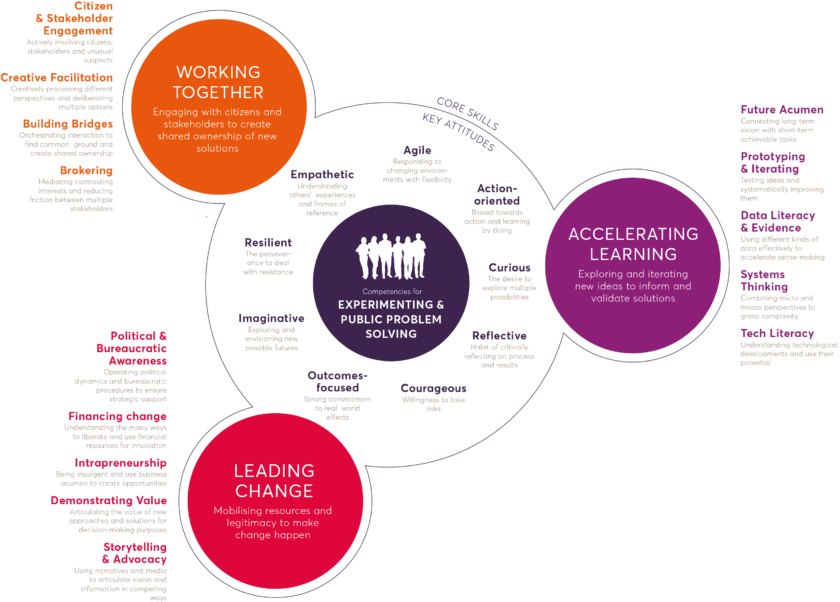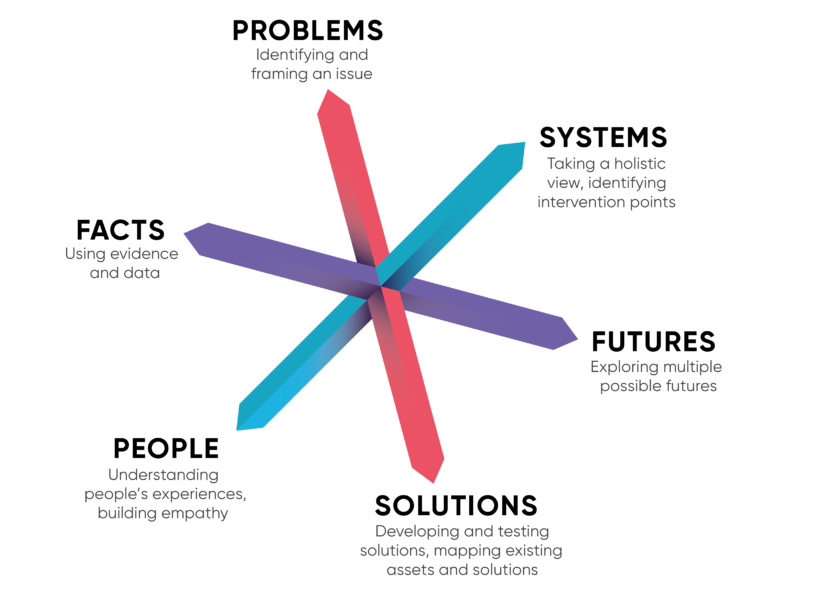Cedric Jean-Marie is one of the Government of Canada Entrepreneurs’, taking part in the States of Change programme in Canada. Here he reflects on his personal journey so far (the ups and downs), and shares the learnings which have stuck out for him.
This blog was adapted from Cedric’s original blog on the Government of Canada Entrepreneurs’ Medium, you can read the original here.
How do you start a blog post to share some inner thoughts and reflections about my new nebulous job and an international programme designed to tackle public sector innovation? I figured leading with honesty might be a great way to start, so let’s jump in.
I recently started a journey with my fellow Government of Canada Entrepreneurs (GCEs) which will officially span a year, and will unofficially last the entirety of our careers in my opinion. Never heard of a GC entrepreneur? You’re likely not alone. My counterpart at Transport Canada Anthony Jaz wrote a good blog post to introduce you to the bunch. Our focus is twofold: core system overhauls and how disruptive technology can help accelerate government transformation.
Our biggest hurdle to overcome as public servants however will be one of culture. Up to 40% of our behaviour is controlled by habit, which is largely dictated by an organisational culture that might not even be perceptible by the vast majority. To drive home the point there is an endless array of books on transforming organisational culture - yet not one can lay out a step by step plan to address and change it successfully. If it were easy everyone would be doing it.
So we’ve essentially been dropped into the middle of a massive death star with no blueprints and clear instructions to find and fix any vulnerabilities (this will likely be my only Star Wars reference, no promises though). To help us on this journey the Impact and Innovation Unit (IIU) has partnered with the Nesta States of Change (SoC) development programme, a first of its kind in the world, which aims to provide participants with the necessary knowledge and experience to hopefully transform the public sector. It is a nine-month commitment that will see us develop skills necessary in order to enact innovative change throughout government.
So many of us (public servants) are hard at work tackling sometimes insurmountable odds in order to improve government for Canadians and ourselves. Day in and day out they give all they have to give in a system designed to incentivise the status quo and every now and then I see them make a dent, shifting us all towards a future worth heading towards.
My goal by year end is to continue this journey I’ve been on these past two years, which saw me working across silos with so many of these amazing people both inside and out of Canadian Heritage, delivering on incremental change that better serves not only us but Canadians.
We are never done learning and improving in life, we strive for perfection, always chasing as it eludes us constantly, forever outside our grasp. So starting our journey with a programme focused on public sector innovation seems quite fitting.
I must confess that school and traditional methods of learning have always been difficult for me. The few teachers and mentors that pierced my veil of inattention were passionate and inspiring to listen to. Their power over me laid in their ability to connect what I was learning to what we’d be doing or seeing in life.
The SoC programme tackles learning in a similar fashion, however it pairs learning with doing in the here and now. Like many training programmes, it isn’t so much about what you learn but how you apply it. We often struggle with making that leap from the theoretical to the practical, well at least I do. Below I’d like to share some of the most poignant aspects of the SoC programme as well as some of my thoughts and reflections.
1. Our current government is misaligned with its intended purpose
On our very first day Marco Steinberg stressed that our 18th century institutions are struggling with 21st century problems and technology. I have seen this divide evolve over my 15-year career. As Scott Brison, the president of the Treasury Board of Canada, so elegantly stated “We can’t be a Blockbuster government serving a Netflix citizenry!”
Our siloed approach to serving citizens has reached its apex, and we all see how cross domain cutting issues cannot be tackled in compartmentalised ways. We need to drastically increase our ability to work across domains to tackle the complex problems that face us today, and we need to do so in a way that demonstrates that digital is part of our DNA.
2. Learn and improve by doing
The SoC programme promotes a “bias towards action” so that your learning is tangible and cast against real-world challenges and projects.
Too often we get consumed in the breadth and weight of challenges that we find ourselves suffering from analysis paralysis. You will never solve complex problems on the first try, so don’t wait too long before diving in. Besides, the world continuously shifts and changes so it’s best to work through things quickly and iteratively.
3. We are moving from risk to ambiguity
Let me ask you the same question we were asked. Is the world predictable or ambiguous? Much of what we do in government operates with the assumption that the world is predictable. Operating in this fashion means we deal primarily with risk, which is backed by probabilities and data.
In an ambiguous world however, often what we end up dealing with is uncertainty, which is the absence of probabilities and data. In such circumstances you want to shift from the default behaviour of coming up with solutions to transforming them into testable hypotheses. This way you are building the necessary knowledge and data to eventually be equipped to deal with probabilities and risks, which brings me to the next golden nugget.
4. Turn your ideas into testable hypotheses
In an ambiguous world we need to move from solution building to coming up with a hypothesis you can test. Frame your ideas using the if/then language such as if we regulated the contents of vending machines then less sugar based snacks and drinks would be bought. This pairs your proposed solution with a method of how you might measure its success.
Naturally, as problems get more complex the more difficult this becomes, hence why working with a diverse team is critical to help balance and flesh out your proposed solutions with the reality of the world. This line of thinking is not new and quite a few are making great strides in helping others move in this direction such as the folks at TBS who are running the Experimentation Works initiative.
5. Iteration and experimentation as a new way of life
Now that you have testable hypotheses, strive to take incremental steps in your problem solving journey. The goal is to become incredibly proficient at planning, implementing and changing so that it happens almost concurrently. This iterative experimental process becomes a way for the system to deal with ambiguous questions known as wicked problems in our domain.
Frame your experiment in such a way that the scope and complexity remains small enough to achieve in a reasonable amount of time. We need to move away from the big bang approaches where we craft 100-page requirements documents and disappear for a year or two. Feedback loops need to be incorporated into the journey as early as possible to make sure you are even heading in the right direction. This allows you to deliver incremental change more rapidly in ways that are more agile should a change in direction be needed or when new insights emerge which is happening all the time now anyhow.
6. Deal with risk holistically
We are adept at dealing with risk, it is tightly entwined into our DNA with risk frameworks and mitigation strategies. What we might not do however is balance the risk of doing something with the risk of not doing something, and sometimes the latter carries much greater consequences.
In order to better understand this, think of the balance that IT security must contend with constantly. On the one hand it is much safer and less risky to block all websites that allow you to upload potentially sensitive information. On the other hand, it removes access to digital capabilities that can greatly benefit the organisation and its employees. In the short term, the benefits are easy to see and support but over time the impact can be profound. So when we think about risk we need to take a holistic view that balances both.
7. Apply design to team formation
How often do we discuss team composition when putting a team together? Too often we treat team formation as a voluntary exercise, and behind our backs we cross our fingers and hope that we get the right skillsets we need to get the job done.
During the SoC programme, we broke off into our respective teams and were forced to evaluate our core competencies and skills against the Nesta Competency Framework, figure 2 below, to see how well balanced we were as a team. We could then see we were weak in a few key areas such as financial innovation, prototyping and iteration as well as data literacy and evidence.
This is when a light bulb went off for me, why wouldn’t design be as important during team creation as it is in all other aspects of problem solving? Diversity of skillsets, thinking, backgrounds and so much more have become indispensable when dealing with wicked problems, it truly is an intellect multiplier. Since we need to work across domains and siloes, it will be crucial for us to approach team formation with a design lens to make sure we have all the right skillsets at the table.
8. Methodologies as options, not gospel
The final aspect of the programme that really spoke to me is the idea that any methodology comes with a set of pros and cons. It is important to not assume that one approach is the best and only method to solve problems.
For example you shouldn’t rely on design thinking only to tackle every single issue you come across, just like you shouldn’t just rely on metrics and data to measure success. The programme recommended a shift from a focus on methods towards habits and mindsets. The below diagram does a fantastic way of visually demonstrating how one might balance the various methods of problem solving.
For example one could pair facts (data and evidence) with futures thinking (foresight). Like all things in life, moderation is key, and a balanced portfolio is necessary for an organisation to thrive in a world that has so many dimensions.
If you’ve made it this far kudos to you and thanks for sticking it through. Our motley crew will be actively sharing our experiences and lessons learned openly, so if this sort of thing peaks your interest be sure to follow our progress on twitter as well as our blogging efforts.



